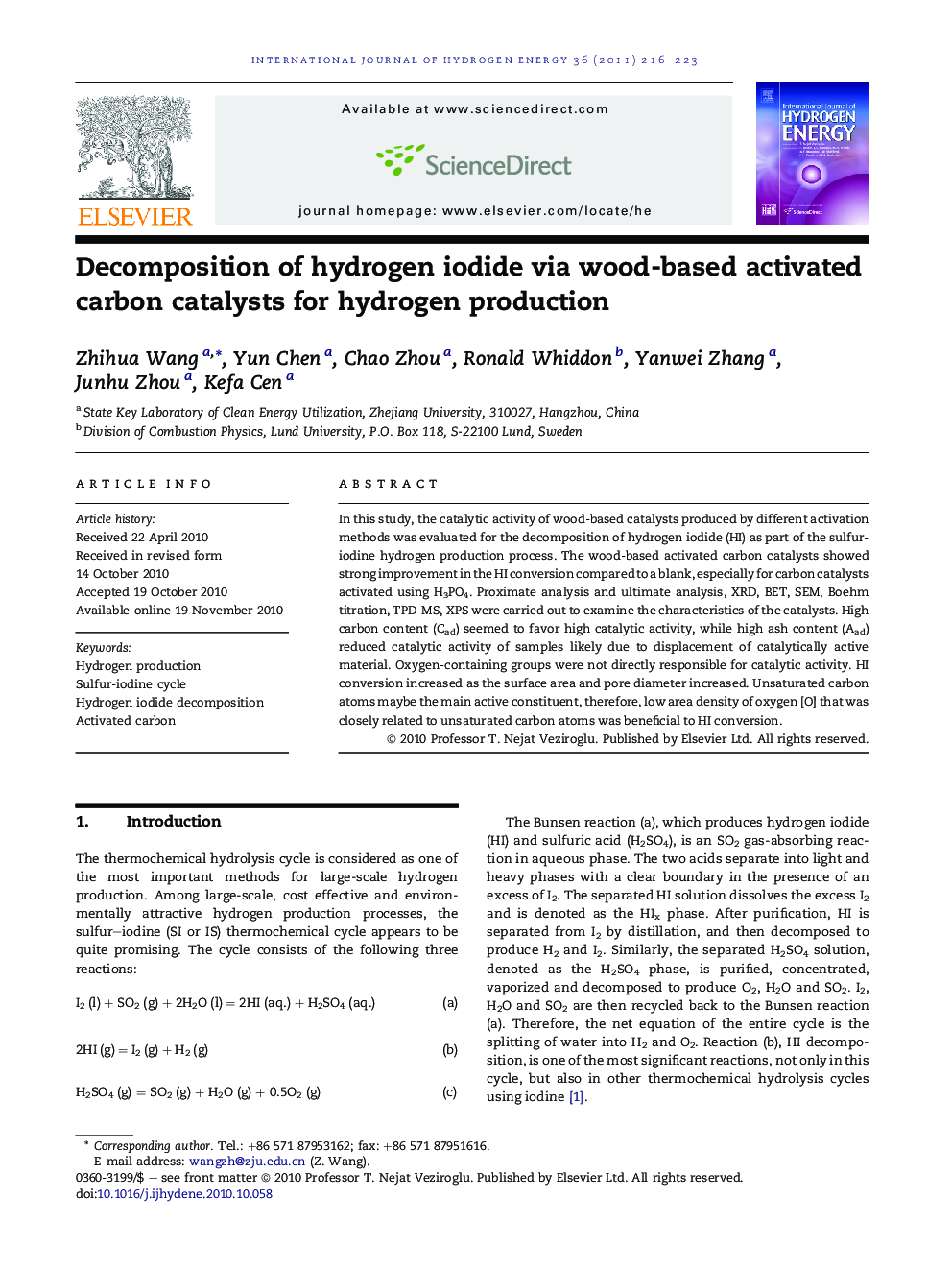| Article ID | Journal | Published Year | Pages | File Type |
|---|---|---|---|---|
| 1277768 | International Journal of Hydrogen Energy | 2011 | 8 Pages |
In this study, the catalytic activity of wood-based catalysts produced by different activation methods was evaluated for the decomposition of hydrogen iodide (HI) as part of the sulfur-iodine hydrogen production process. The wood-based activated carbon catalysts showed strong improvement in the HI conversion compared to a blank, especially for carbon catalysts activated using H3PO4. Proximate analysis and ultimate analysis, XRD, BET, SEM, Boehm titration, TPD-MS, XPS were carried out to examine the characteristics of the catalysts. High carbon content (Cad) seemed to favor high catalytic activity, while high ash content (Aad) reduced catalytic activity of samples likely due to displacement of catalytically active material. Oxygen-containing groups were not directly responsible for catalytic activity. HI conversion increased as the surface area and pore diameter increased. Unsaturated carbon atoms maybe the main active constituent, therefore, low area density of oxygen [O] that was closely related to unsaturated carbon atoms was beneficial to HI conversion.
